EIP-4844: Protodanksharding-Making Ethereum Layer 2 Rollups Cheaper

5 mins
Last Edited: Apr 02, 2024
Share
EIP-4844: Protodanksharding-Making Ethereum Layer 2 Rollups Cheaper
EIP-4844, or Proto-Danksharding, improves Ethereum's scalability and reduces transaction fees by managing data more efficiently with blobs, making transactions faster and cheaper on Layer 2 rollups.
Advanced
Blockchain Infra
EIP-4844 is part of Ethereum's long-term roadmap's "The Surge" phase.
As we know, Ethereum, is the go-to platform for blockchain applications but faces a crucial challenge: scalability. The sheer volume of activity on the network, from platforms and protocols to apps and tokens, leads to slow transaction processing and high gas fees.
In the past, transaction fees on Ethereum have peaked at over $200 during busy periods, and they're currently above $20. These high fees make it difficult to use Ethereum for small transactions.
Sharding
To address these concerns, Ethereum's roadmap includes various upgrades. The initial plan involved sharding, a technique aimed at cutting down network congestion and lowering gas fees by dividing the vast Ethereum blockchain into smaller segments. While the switch to proof-of-stake with "The Merge" significantly reduced gas consumption, but ethereum still needs some improvements to make transactions truly fast and affordable.
Danksharding
However, the current solution being explored is danksharding. Unlike sharding, dank sharding seeks to achieve cost improvements and faster transaction speed without the complexities associated with fragmenting the entire blockchain. So, Ethereum's geared up for its next big upgrade, called Proto-Danksharding (PDS), which is all about reducing transaction fees on layer2 rollups.
ProtoDanksharding, the name comes after the main brains behind the concept- Protolambda and Dankrad Feist.
Now, you might be wondering, then, what exactly are these layer2 rollups meant for?
Well, in the existing market scenario, L2 rollups vie for blockspace alongside all other transactions on the mainnet (layer1 ). Approx. 10-15% of blockspace is consumed by rollups, with nearly 90% of rollup transaction costs allocated to pay for Layer 1 blockspace.
In simpler terms, Layer 2 (L2) rollups handle tasks like computation and compression, and Layer 1 focuses on keeping things in agreement and making sure data is accessible.
Right now, rollups rely on something called CALLDATA, which is basically the most budget-friendly way to stash data on Layer 1. However, call data is permanently stored by nodes and requires 4 or 16 units of gas per byte—depending on whether the byte is zero or non-zero. This where, Proto-Danksharding(PDS) or EIP-4844 steps in-
EIP4844: Proto-Danksharding
EIP-4844 lowers the cost of sending bundled transactions to the Ethereum mainnet. It sets the stage for the implementation of danksharding, a development that is expected to boost Ethereum's throughput to 100,000 transactions per second (TPS).
The protocol introduces a new method for managing transactions through the use of "blobs" of data. These blobs are cost-efficient solutions for L2 networks aiming to transmit large amounts of data to Ethereum's mainnet network (L1). They're already used in programming languages like JavaScript and Python.
But what's new is the idea of using them in smart contracts?!
Blobs
Blobs, short for Binary Large Objects, are hefty chunks of binary data, each comprising over a million bits, or bits and bytes. In simpler terms, they're like big containers filled with zeros and ones.
Blobs are designed to store non-essential data for Ethereum's blockchain operations. This data is accessible to off-chain systems, such as Layer 2 scaling solutions like rollups. Blobs are placed within Ethereum's consensus layer, separate from execution layer where the EVM operates, to maintain efficiency.
Unlike Ethereum's traditional method of storing all data indefinitely on every node, which can be quite resource-intensive, blobs offer a more cost-effective solution. They come with an expiration date, lasting roughly 18 days before they're automatically purged. Plus, each blob can hold a substantial amount of data, up to 128 KB, and a single block can accommodate up to 16 blobs. This streamlined approach means Ethereum can store less data per block over the long haul.
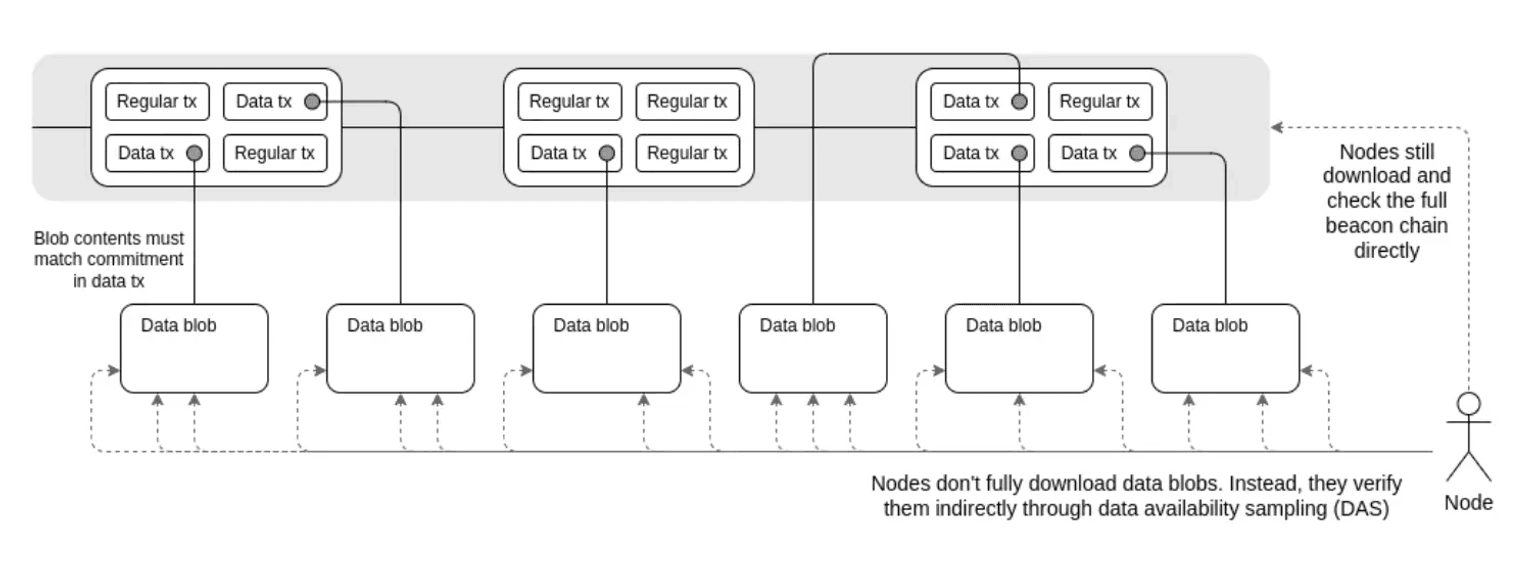
Now, there's something referred to as blob-carrying transactions
Blob-carrying transactions are a fresh addition to the Ethereum network customised for handling blobs. These transactions include a validity proof, enabling the Ethereum chain to verify their authenticity without the need to read the blob itself. They employ a KZG commitment scheme via ZK(zero knowledge) proofs to ensure that while the Ethereum Virtual Machine (EVM) can view a commitment to a blob, it cannot access the blob data directly.
These transactions have their separate mempool from the EVM, which enhances data security while optimizing block space. Furthermore, they feature a new fee mechanism inspired by EIP-1559, where fees are dynamic, fluctuating based on supply and demand. Generally, including more than three blobs per transaction leads to higher fees.
Journey of Dencun Upgrade through Ethereum's layers
Ethereum network is made up of two layers: the execution layer and the consensus layer.
- The execution layer handles smart contract logic and transaction processing, while the consensus layer ensures agreement on the state of the network.
- Upgrades to Ethereum's layers are implemented simultaneously, and the Cancun-Deneb upgrade is a combination of two separate upgrades: Cancun (execution layer) and Deneb (consensus layer).

Upgrading Efficiency in Smart Contracts Layer
These upgrades are part of the execution layer of the Ethereum
- EIP-1153, known as Transient Storage Opcodes, is set to enhance how Ethereum handles transaction data. By introducing transient storage opcodes, this proposal aims to boost the efficiency of smart contracts and lower gas costs. The focus is on improving the effectiveness and reducing expenses related to storage operations during the execution of smart contracts.
- EIP-6780 aims to strike a balance between improving security and maintaining compatibility with existing Ethereum smart contracts. It achieves this by limiting the functionality of the SELFDESTRUCT opcode, a feature that can be misused and cause security vulnerabilities.
- EIP-5656 introduces MCOPY, a more efficient memory copying instruction, enhancing EVM performance without affecting existing functionalities. Thus making it faster and cheaper for developers to build on the platform.
Upgrading Efficiency in Validation Management
Now we focus on the upgrades in the consensus layer of the Ethereum -
- EIP-7044 simplifies the process for validators to exit their roles in Ethereum staking, making it easier for them to withdraw their funds. Additionally, it ensures that their exit actions remain valid even across future upgrades or forks of the Ethereum network.
- EIP-7045 upgrade extends the window for including attestations in Ethereum blocks, allowing validators more time to attest to block correctness.
- EIP-7514 focuses on regulating the pace at which new validators can enter Ethereum's network. By establishing a maximum churn limit of 8 per epoch, Ethereum aims to prevent its system from being inundated with excessive data. This adjustment is designed to maintain the network's operational efficiency and reliability.
EIP-7516 is a proposed update for Ethereum that introduces a new opcode called BLOBBASEFEE. This opcode allows smart contracts to access the current base fee for data blobs directly on the blockchain. This feature benefits rollup contracts by enabling them to effectively manage and predict their data blob costs, leading to improved efficiency and predictability in contract execution.
EIP-4788 aims to reduce the external dependence
EIP-4788, known as the Beacon Block Root proposal, makes it easier for different parts of the Ethereum layers ( consensus and execution layer) to talk to each other. It does this by adding a special piece of information, called the parent beacon block root, to every block that gets processed on Ethereum. This information is then stored in a new kind of smart contract.
In simpler terms, EIP-4788 acts like a messenger that delivers important updates about Ethereum's overall status directly to the main Ethereum network. This means developers don't have to rely as much on external sources to get information about what's happening in Ethereum. This is especially useful for things like staking pools and arrangements where knowing Ethereum's current status is really important.
How Does Proto-Danksharding Reduces Gas Fees?
EIP-4844 reduces the gas fee on layer 2 through following ways-
Increase data capacity- Blobs are large bundles of information that don't hang around forever on Ethereum. They're like temporary storage units that make room for more stuff by disappearing after they're done.
Increase Efficiency- Layer 2 Rollups can handle lots of transactions outside of the main Ethereum network. They bundle up all these transactions into one big blob of data and then send it to the main network. This saves time and makes Ethereum work faster.
Offload the burden on Ethereum Mainnet- Ethereum moves a big chunk of its transaction data away from its main network to blobs. These blobs hold onto the data temporarily, which helps to keep the main Ethereum network running smoothly without getting too bogged down. This shift away from on-chain storage leads to improved performance and speed for Ethereum.
Benefits of Implementing EIP4844
Reduced Transaction Fees: By leveraging off-chain solutions for data storage, EIP-4844 is poised to slash transaction fees substantially. This cost reduction is anticipated to democratize access to Ethereum, making it more inclusive for a broader spectrum of users.
Enhanced User Experience: The combination of lower transaction fees and quick transaction processing time is expected to elevate the overall user experience within the Ethereum ecosystem. Users can anticipate smoother and more affordable interactions with the network, contributing to a more seamless and satisfying experience overall.
Impact of EIP-4844 post its Launch
The founder of zkSync, Alex Gluchowski, shared the gas fee reduction on Layer 2 rollups post-4844 implementation
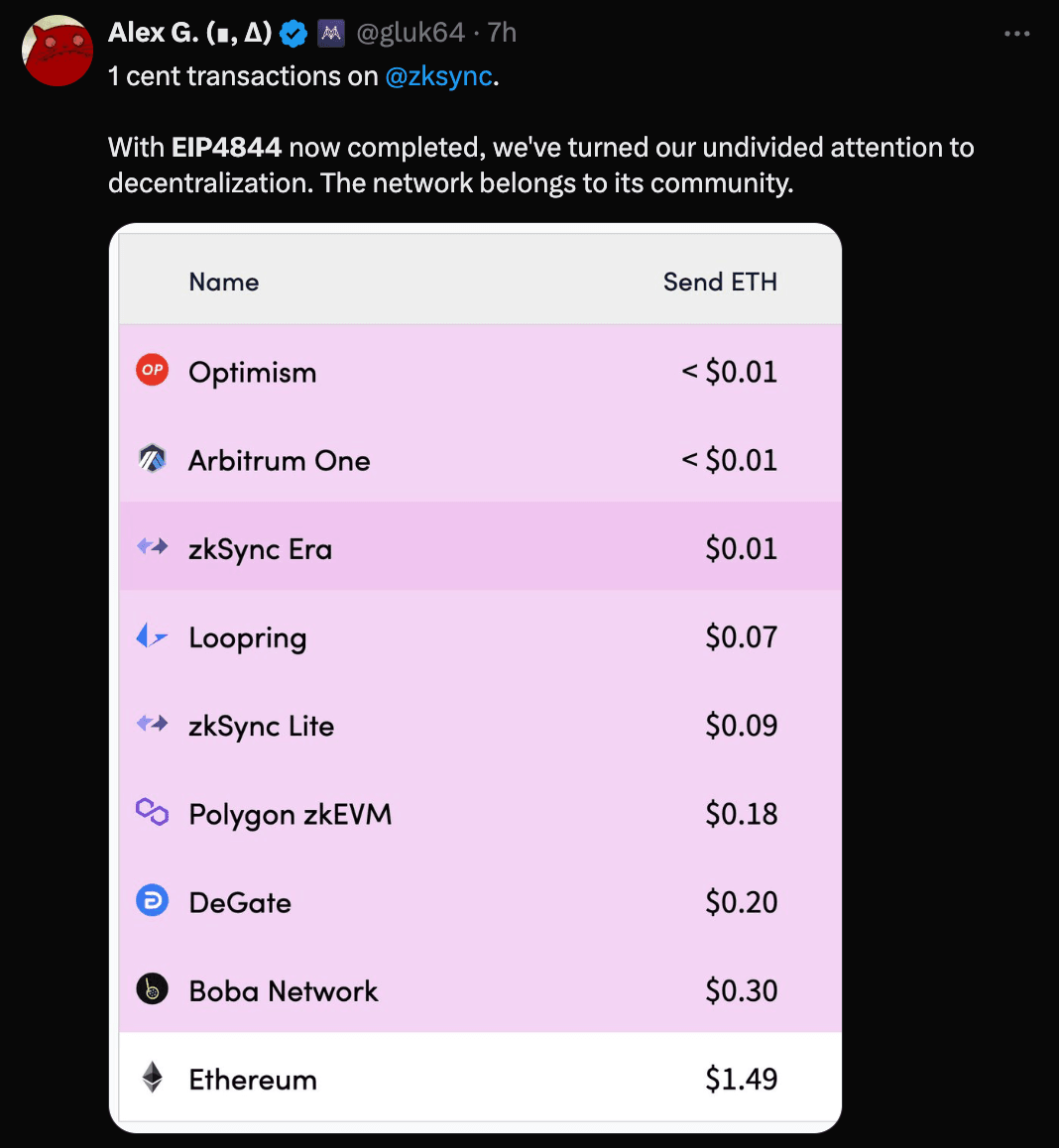
Jessak Pollak, founder of Base, equally shared the rise in the number of active wallet addresses on Base post 4844 with a sudden fall in gas fees.
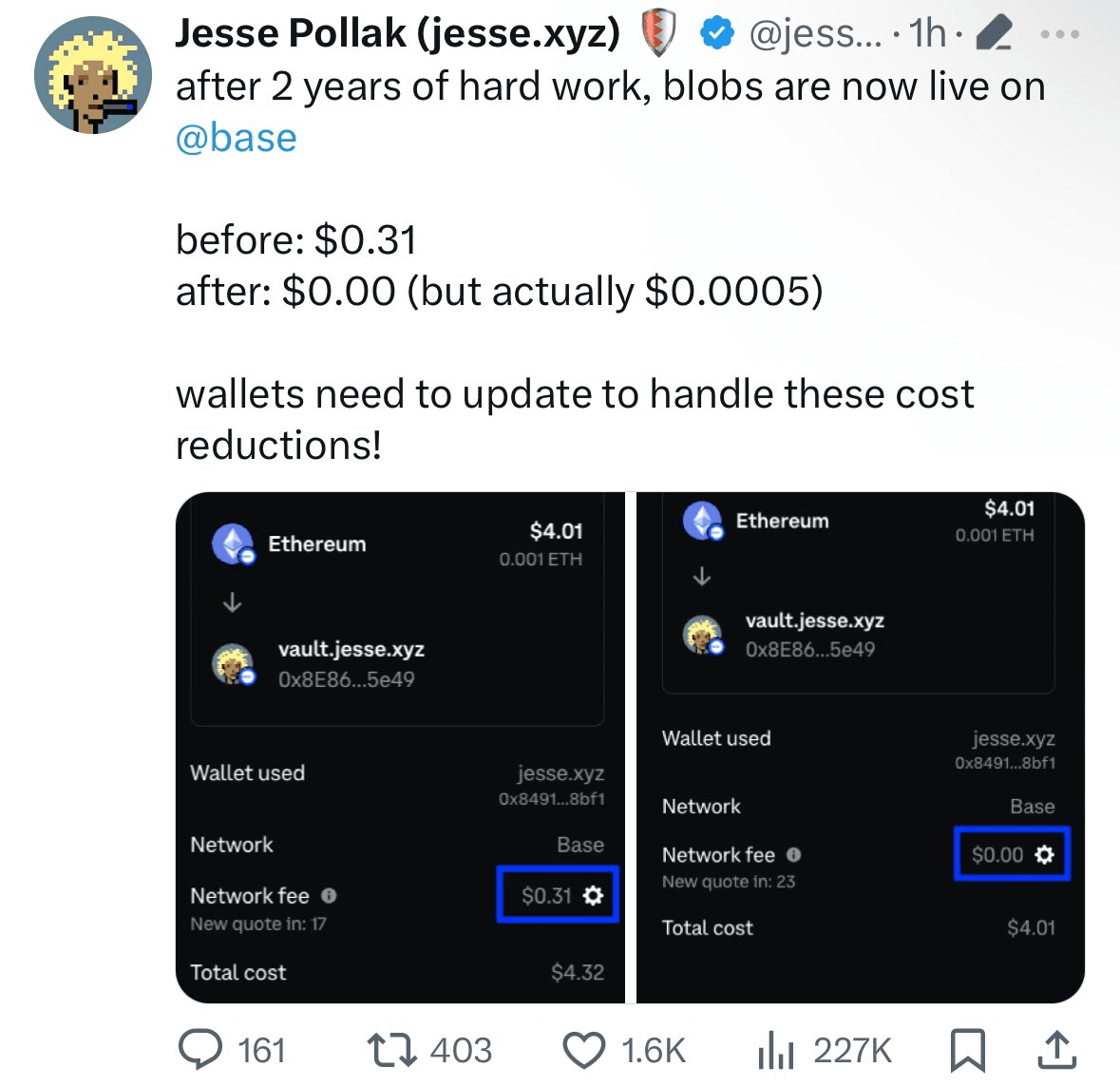
Also, based on the data available on the Dashboard by Kofi on Gasfees.io reflects the marginal drop in gas fee post the 4844 upgrade on L2 Rollups with Blobs compared to the L2s without the Blobs.
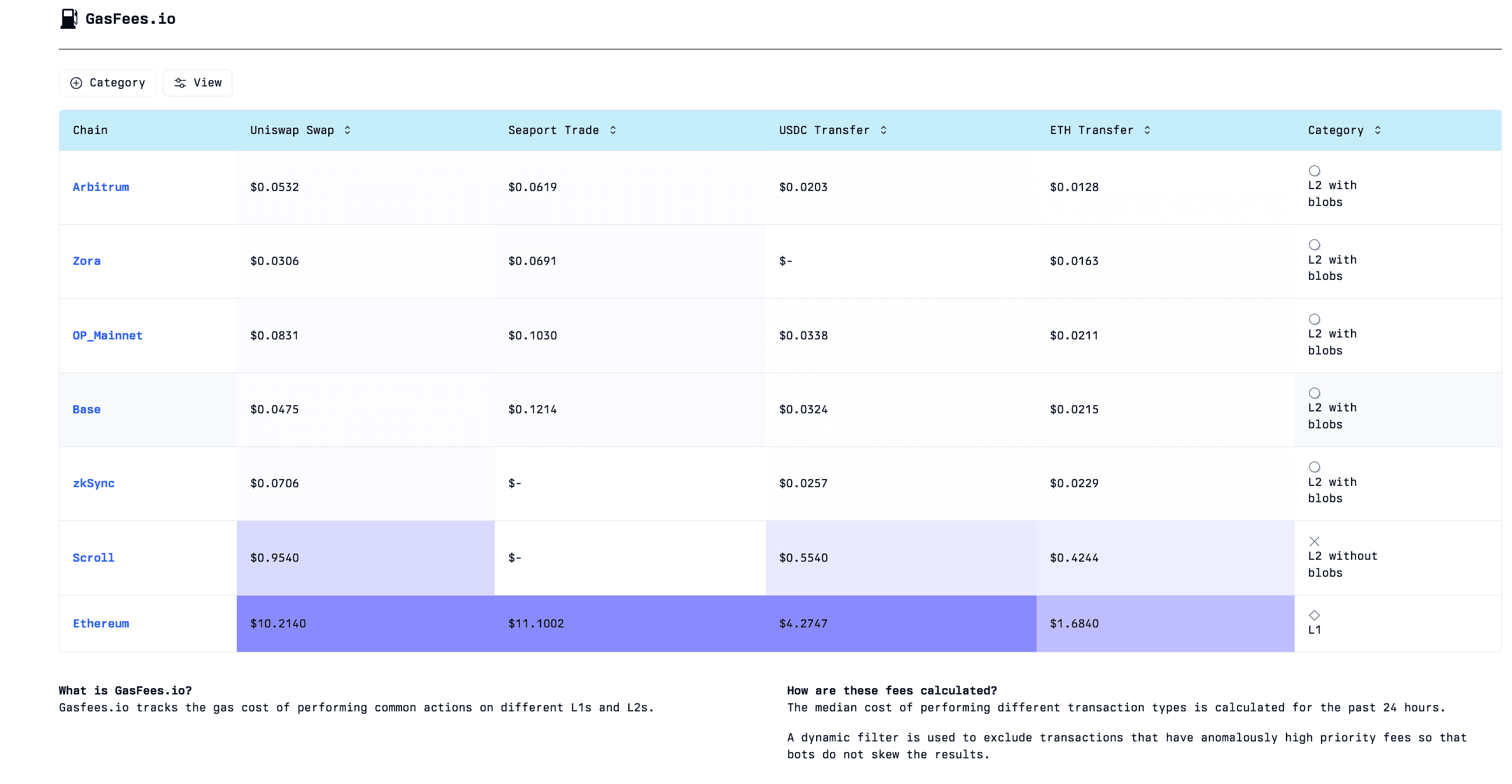
For an easy peasy go through explainer on EIP4844, you can just swipe in to WTF’s EIP 4844?
There’s a blob calculator on the page that helps you track gas fee on various L2’s
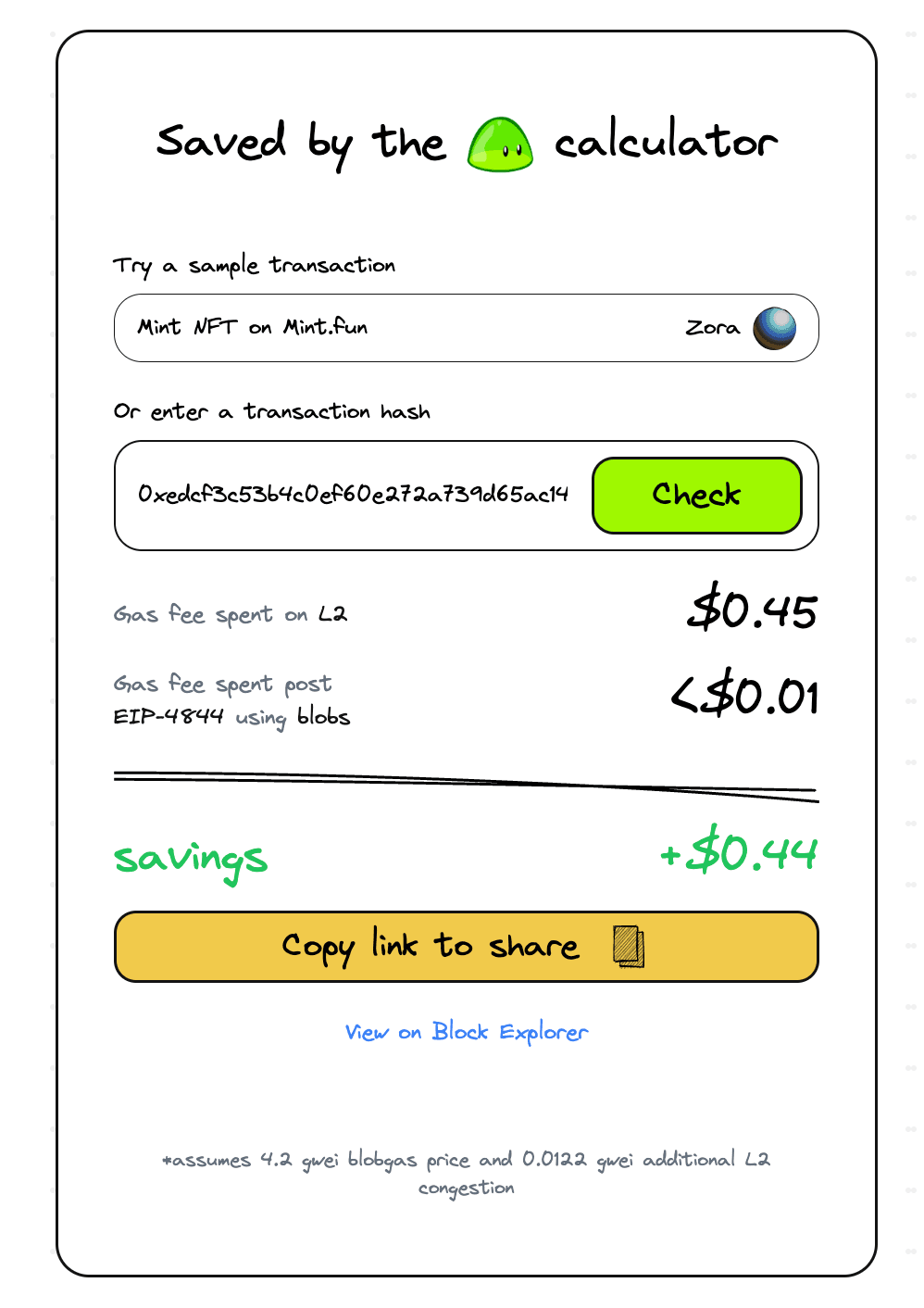
Conclusion
EIP-4844 is poised to decrease transaction fees, signaling a substantial transformation in Ethereum's revenue model. Despite this, the future still looks positive. Cheaper Layer 2 transactions could encourage more activity on the network, potentially resulting in more transactions. Also, reduced transaction costs might make it easier for everyday users to adopt web3 apps by making user-signed transactions less complicated. The implementation of EIP-4844 is a big step in Ethereum's development and requires careful attention from both developers and users.
References
https://medium.com/@chaincom/a-complete-guide-to-ethereums-dencun-upgrade-fb35257c57f5
https://medium.com/@thecryptologyacademy/unfolding-eip-4844-a-deep-dive-into-proto-dankshardings-impact-on-ethereum-s-future-80c997a271d4 https://medium.com/@devudilip/eip4844-proto-danksharding-with-simple-story-778f0b7cabe1 https://medium.com/@devudilip/eip4844-proto-danksharding-with-simple-story-778f0b7cabe1
https://consensys.io/blog/ethereum-dencun-upgrade-explained-part-1
🔑 Key Takeaway
EIP-4844, also known as Proto-Danksharding, is a major upgrade for Ethereum aimed at reducing transaction fees and improving scalability. By introducing blobs of data and optimizing layer 2 rollups, Ethereum aims to enhance efficiency and lower costs. This upgrade is expected to make Ethereum more accessible and user-friendly, driving adoption and activity on the network.